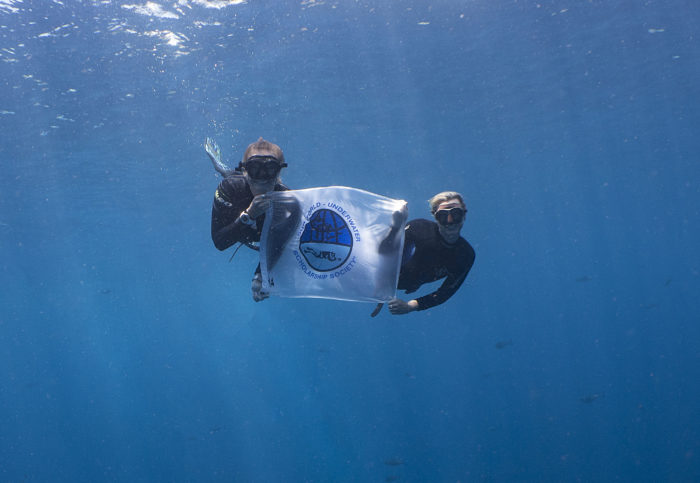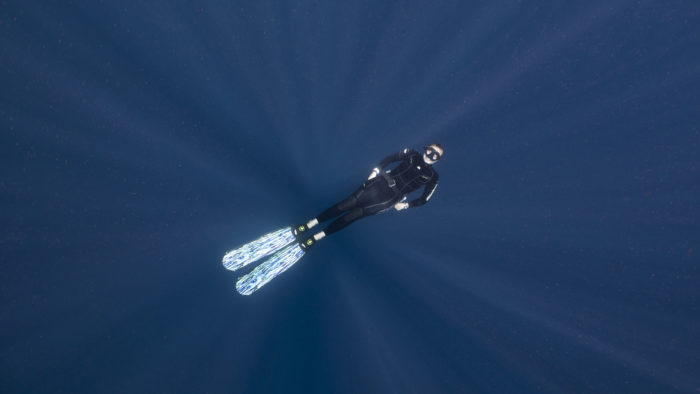
I wish I had gills! I have always loved being underwater and seeing how long I could hold my breath for. It is an escape from the city life and noise to a whole different world and one that I always am so grateful to be able to get away to. For me, it also hasn’t mattered if it was the sea or the pool, just being in the water felt fantastic. Converting from years of squad swimming, I’ve been playing underwater hockey for over 10 years now (if you’re not sure what this crazy sport is I suggested Google or YouTube videos) and have represented Tassie multiple times and even Australia back in the day! Applying my breath hold skills (minus the tanks) over the last few years to my underwater photography has also been something I’ve been working on, and even more so recently with Alex Kydd on the beautiful Ningaloo Reef where I undertook my photography workshop.
But underwater hockey and recreational breath hold are quite different to the art of freediving. So, when the opportunity arose to receive formal training in freediving with Australian Champion Adam Stern along with the current World Champion, Alexey Molchanov, for a week of intensive workshops and diving sessions, I was extremely excited to dive in head first without all the gear!

I headed off to Amed in Bali, which was about a three-hour drive from Denpasar, for Deep Week 2018. The air was warm, the people so friendly, all smiles and with the water of Jemeluk Bay a deep crystal-clear blue, I knew I would be in for a fantastic week. Deep Week 2018 was different this year compared to previous scholars who have attended. This was the launch of the freediving company Molchanovs‘ educational program and we were the first students in the world to be undertaking this course! Founded by Alexey Molchanov and his late mother, the former world champion, Natalia Molchanov, the Molchanovs’ way of teaching aims to bring the best of the best in freediving education, that previous freediving certification companies (often linked to scuba diving companies) could not.
The week started off with the meet and greets and learning the different disciplines of freediving – this included photography, competitive and recreational. Then within the disciplines, the types of freediving: static – holding your breath in the pool for as long as you could; dynamic – how far you could swim horizontally; constant weight -kicking down next to a line to a given depth; and free immersion – pulling yourself down a line to a given depth. The gear required for this type of diving is minimal in comparison to scuba – larger fins (if you wish), a low-volume mask, snorkel, wetsuit and a rubber weight belt with weights. Workshop sessions happened morning and afternoon with diving in between, Crossfit in the late afternoon, followed by mediation.
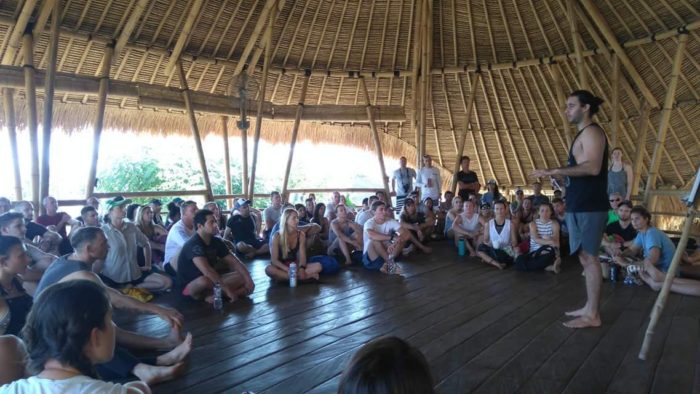
The week was focused on improving our techniques to make us better and more confident divers. It was also all about RELAXATION – as this was the key to a successful dive! This was to ensure we used as little energy as possible to undertake our dives – this is because you’re not constantly supplying your body with oxygen for this sport, you are training your body to work anaerobically. So, the more efficient your duck dives, body position, as well as the more relaxed you could make yourself, but whilst maintaining a streamline position, the better your dive turned out to be. This all comes back to the mammalian diving reflex – the body’s physiological response to being underwater and tolerating lower levels of oxygen. Using surface buoys and a line, we utilised the breath-up techniques we had been taught in theory and pool sessions and applied them out in the ocean. Once we had surfaced from a dive, recovery breathing was emphasised by every single one of our instructors, as this had been scientifically proven as the most efficient was to get oxygen back into the blood quickly. We also practised rescue scenarios, such as shallow-water black-outs just in case and so we were well prepared as stand-by divers.
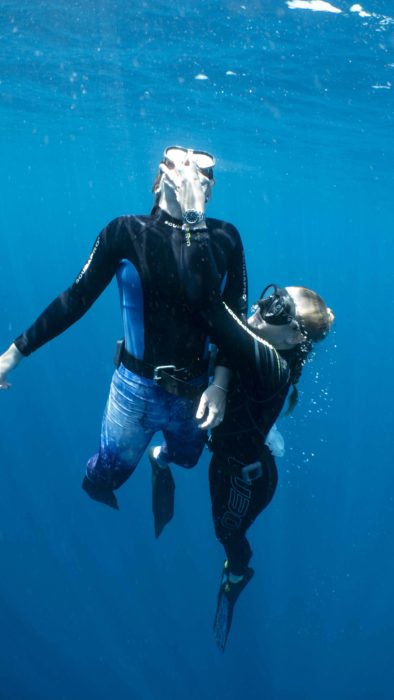

Fundamental in freediving is equalisation! A lot of scuba divers tend to use a Valsalva technique for equalising, but Frenzel equalisation is actually a much more efficient way to equalize. This technique was emphasised in theory, dry and then putting it into practical use in the water. Frenzel equalisation uses smaller muscles groups and therefore means less energy is required (more oxygen for the rest of the dive!). For freediving, small equalization was required more frequently, to ensure the pressure didn’t build up suddenly.
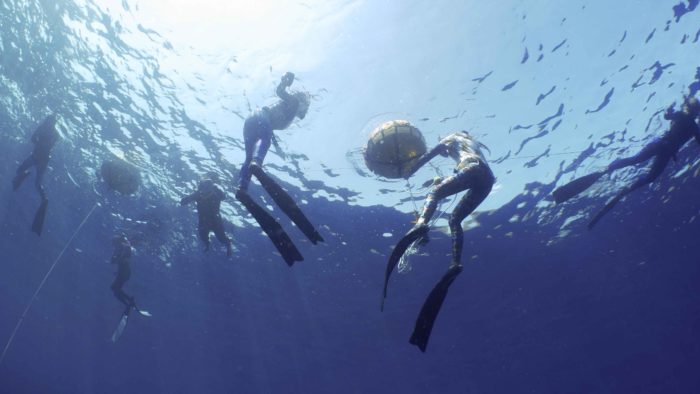
The hardest part of this week for me was learning to get my zen on – really relaxing and letting my thoughts go. The mental thoughts that come to you when your 20 meters deep or more is “what am I doing”, “I’m running out of air”, “I should turn around and go back up right now”… and everything else you can imagine. Through a series of yoga, practical and theoretical meditation classes we learned more about how to listen to our bodies and about letting our thoughts go. There are two main types of meditation for freedivers, Vipassana and Samatha. Alexey presented these forms of meditation to us and taught us methods for allowing our minds to have complete control of our bodies. This also included the art of attention de-concentration and not being goal orientated in freediving by a number (i.e. depth). This could be achieved by learning how to shift our attention from thoughts to the moment and the sensations we are feeling.

The mental strategies workshop by Adam really showed why we get anxious during freediving. He gave us strategies to make sure we were diving to where we are comfortable, happy and the importance of programming your mind through visualisation. Adam highlighted the effects of negative imprinting on any diver – imprinting and dwelling on mistakes, bad experiences and negative associations with diving are likely going to be the mentality you take into your dive. So, it is really important to emphasise good and positive associations with your diving – every dive should be a great dive that can only be improved on. Visualising your potential by using your emotions as a motivator was also a strategy that was emphasised – this will be the extent of our potential if we can harness this. Remember that feeling you had when you reached a new personal best after a dive? Everyone cheering and splashing once you reached the surface – well you want every dive to be like that, so if you see yourself doing it, you will be able to!!!

Mental programming is critical in freediving, particularly to make the time disappear. It creates a positive scenario in your head, a story or even a detailed visualisation of an everyday task. For example, visualising yourself driving to work in great detail can distract you from the fact that you are at depth and holding your breath. Most importantly, bouncing off other diver’s positivity helped enormously! In the end, it is our dive and we want to be controlling how we feel, being present in the moment, the technique, equalisation and not being influenced (negatively anyway) by those around us. These are the keys to successful freediving.
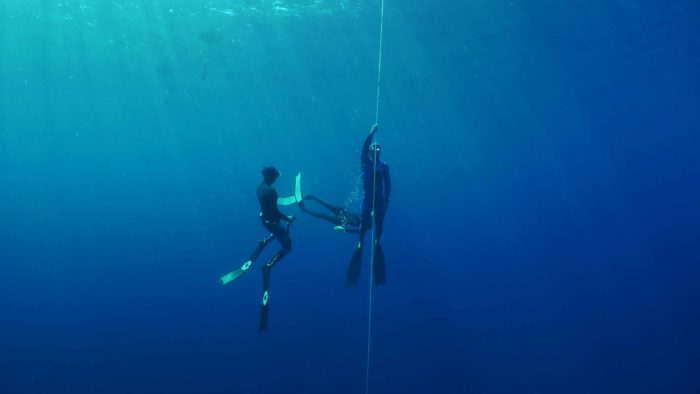
More advanced workshops that were offered throughout the week included mouth fill equalization techniques, no hands equalization and a monofin workshop Alexey Molchanov, who currently holds the world record for freediving to 129m with a monofin!!! Creating a training program by Paul Knowles, Adam’s personal trainer gave us the tools needed to apply to our personal freediving goals and to create a way we could maintain what we had spent a whole week learning and training, even if you don’t have access to a pool. Plus, how to train for freediving outside of Deep Week with Alexey.
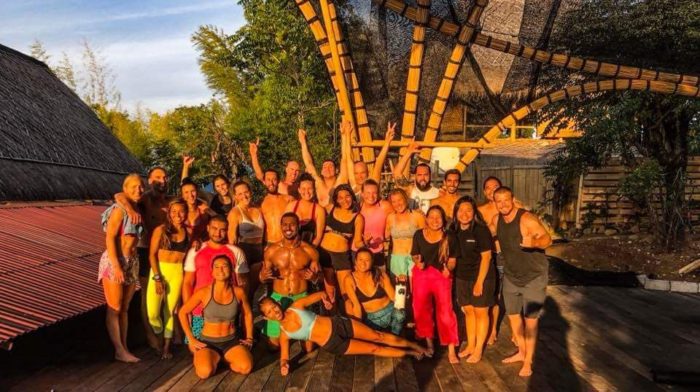
Mid-week we put the skills we had learned so far to the test and headed up to Tulamben for some fun-freediving on the USAT Liberty Wreck from World War I.

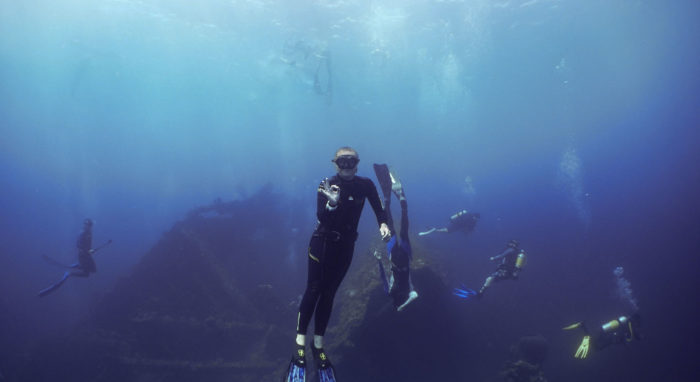
I was enjoying and learning so much from the course that I managed to progress from the Wave 1 course to complete both Wave 1 & 2. Through all the techniques we learned, I was able to completely relax myself to achieve a personal best depth of 35 meters on one breath and I even won the fastest progression award for Deep Week! I can’t believe how much I was able to learn in just one week, despite all the earthquakes we had and how truly amazing the human body is. Most of all, I was amazed at how much of an influence our mind has on the task we are trying to achieve!

During our rest day, many of us got together to do the annual Deep Week beach clean-up. The small bay of Jemeluk had given us such beautiful, crystal-clear water, and although we did have to pick up the occasional piece of plastic during our dives, the bay was surprisingly clean (compared to some areas on land), but it was important to us all to help out where we could to keep this bay clean for the locals, as well as future Deep Weeks to come.
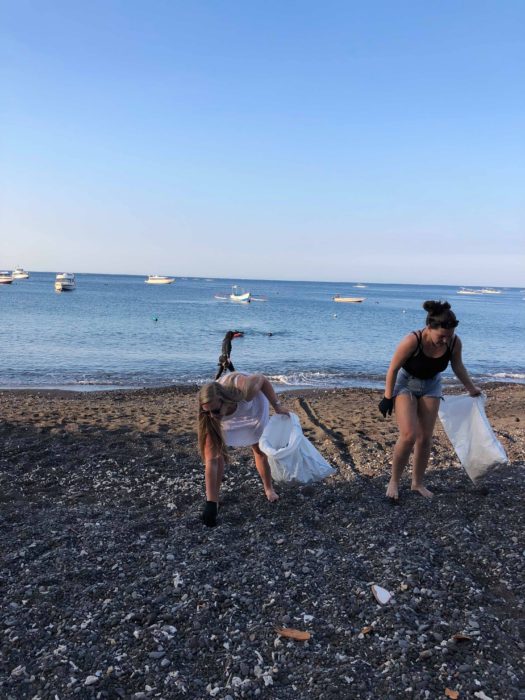
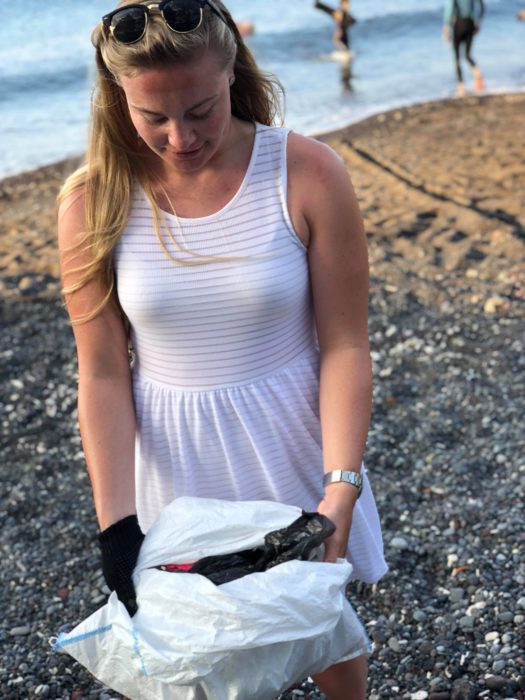
A HUGE thank you in particular to Adam Stern for continually supporting Rolex Scholars to come and experience freediving with world-class instructors. Also, a big thank you to Alexey Molchanov, Shane, Shaz, Bing, Ollie, Erin and all the others who instructors and were a part of making Deep Week 2018 such an amazing and successful week. Experiences like this certainly aren’t as special unless you have people to share it with, and I was so lucky to meet so many amazing people at Deep Week. But a big thank you to Kate, Violet, Bridget, Chloe, Gabe, Clare, Tara and Tracey just to name a few, for the support and encouragement along the way!
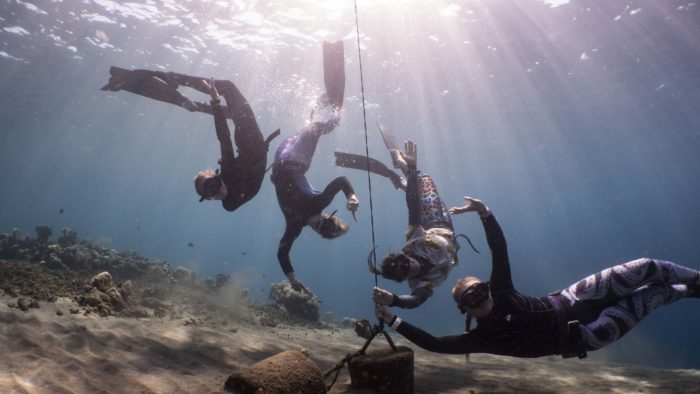
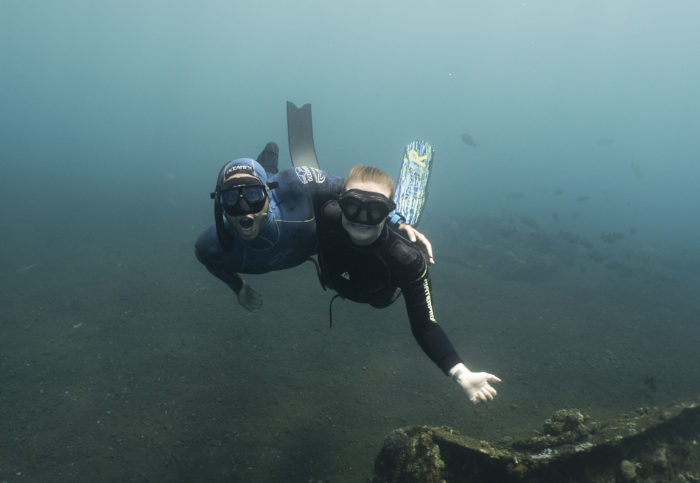
A massive thank you to DiveR Australia for sponsoring me with my magnificent pair of freediving fins, which were just amazing and helped me so much in improving my freediving techniques. Again, thank you to those who make these opportunities possible as the Australasian Rolex Scholar including OWUSS, Rolex, TUSA, Waterproof International, Reef Photo & Video, Nauticam, Light and Motion, DAN, PADI and Mako Eyewear.
